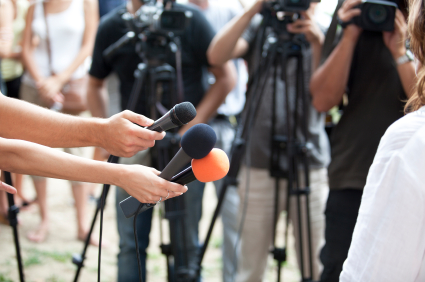The crazed “fake news” phenomenon has swept the nation, scaring, enraging and frustrating many of America’s citizens. Who are we supposed to believe? What are we supposed to believe? Why even bother, really?
After recently accusing popular news sources, President Donald Trump has seemed to bring the “fake news” issue into the limelight, tweeting things like, “FAKE NEWS media knowingly doesn’t tell the truth. A great danger to our country. The failing @nytimes has become a joke. Likewise @CNN. Sad!” According to an article from The Washington Post, Trump also barred news sources CNN, New York Times, Politico, the Los Angeles Times and BuzzFeed from attending a non-televised briefing on Friday, Feb. 24.
According to Politifact.com, “fake news” is “made-up stuff, masterfully manipulated to look like credible journalistic reports that are easily spread online to large audiences willing to believe the fictions and spread the word.”
Most of the time, this misleading information is not to “expose the truth” but to get people to visit their web pages and collect the revenue that comes with each click. It’s called “clickbait,” which is why a sure sign of fake news is headlines in capital letters that say “MUST READ.”
“Fake news,” however, has been deemed by the Trump administration as basically any type of media outlet that will paint Donald Trump in a bad light. Obviously, that’s not the definition of “fake news,” and so Trump’s reaction to CNN and New York Times, two liberal leaning news sources, is one that reminds me vaguely of a toddler trying to hide his mess from his parents.
It’s clear that there is an extreme overuse of the words “fake news,” especially with accredited news sources like The New York Times and CNN, when in reality they are not the “fake news” sources we should be worrying about. This rhetoric is causing distrust of media that should be trusted. They may be biased, but slightly biased media does not mean that they report fake news. The “fake news” rhetoric seems to be a sad reflection of many people’s thought processes today: “If you don’t agree with what I’m saying, then you’re wrong.”
We cannot sit idly by and watch as the sanctity of the First Amendment is being trampled on by this loose, destructive rhetoric. We must stand up for the freedoms given to us by our Constitution, including freedom of the press. It is important for us as U.S. citizens to realize that a truly free press is a staple of democracy. The Constitution’s First Amendment protects freedom of speech, freedom of religion, freedom to assemble, freedom to petition and freedom of the press. However, I recognize that “freedom of the press” may be difficult to put a definition to. But, long story short, the freedom of the press is actually there to protect the American people’s thoughts, information and their opinions. If we want the freedom to say what we want and receive reliable information about our government, then we need to stand up for the press.

